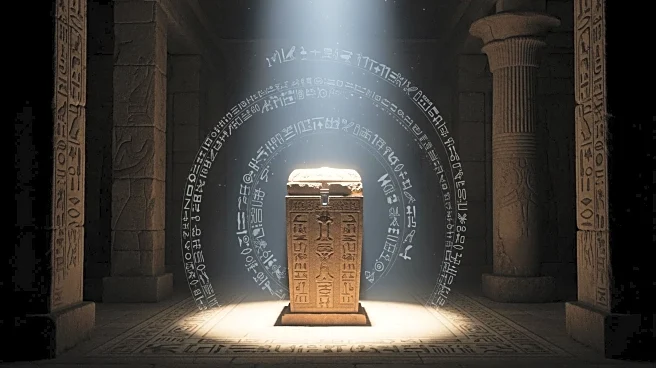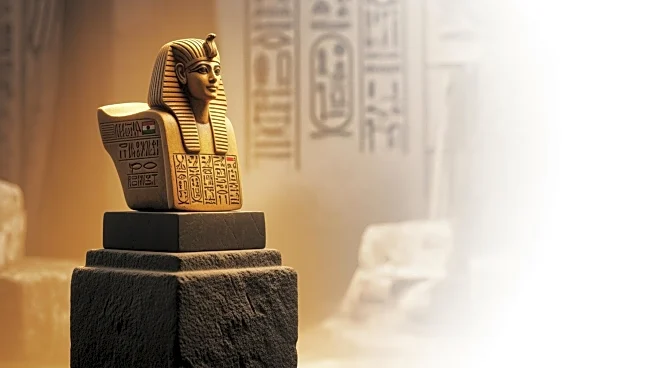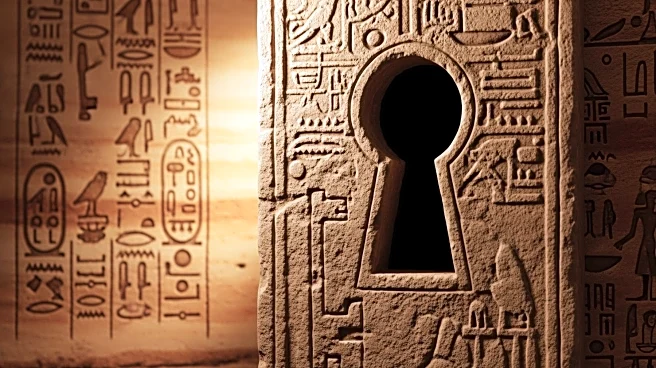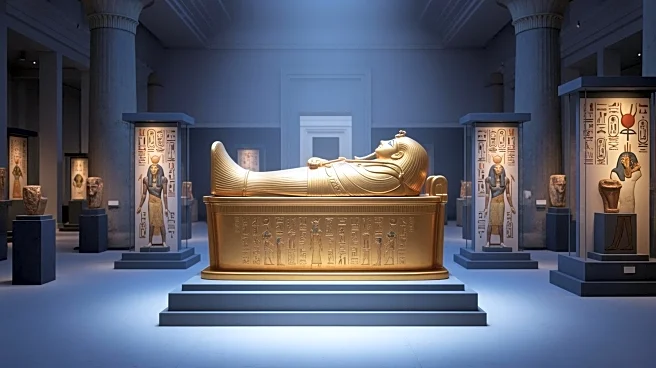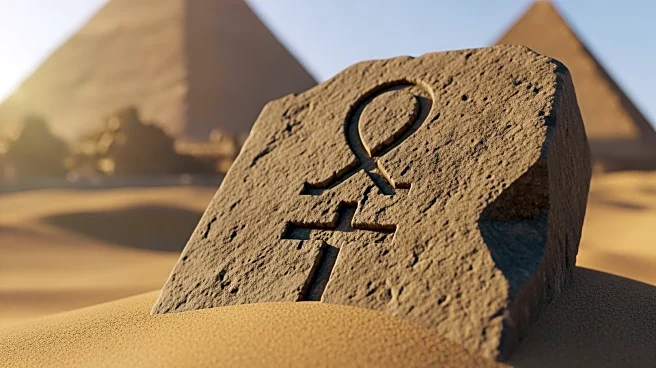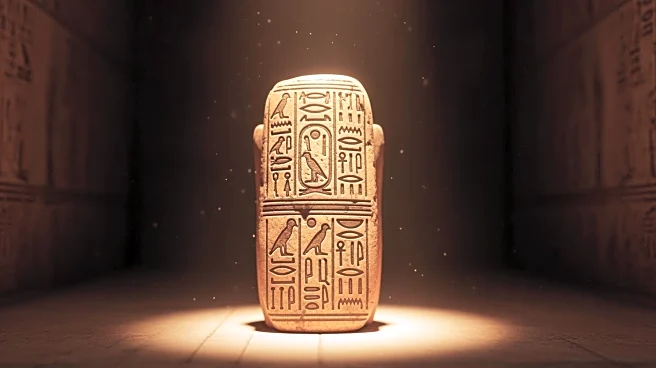What's Happening?
A team of researchers from Cairo University and the Technical University of Munich have discovered 'air-filled voids' beneath the eastern face of the Menkaure pyramid in Giza, suggesting a hidden entrance.
Using electrical resistivity tomography, radar, and ultrasonic testing, the team mapped two gaps behind the granite façade. These findings are part of the Scan Pyramids project, which aims to explore and understand pyramid structures using advanced archaeological tools. The discovery echoes previous hidden-chamber findings in Giza's larger pyramids, advancing non-invasive archaeology techniques.
Why It's Important?
The discovery of potential hidden entrances in the Menkaure pyramid is significant for the field of archaeology, as it enhances understanding of ancient Egyptian architecture and burial practices. The use of non-invasive techniques allows researchers to explore historical structures without causing damage, preserving their integrity. This advancement in archaeological methods could lead to further discoveries, providing insights into the construction and purpose of pyramids. The findings also contribute to Egypt's cultural heritage, attracting interest from historians and tourists alike, and potentially boosting the local economy through increased tourism.
What's Next?
The researchers recommend further investigation of the detected anomalies using other non-destructive techniques to overcome limitations in mapping the full extent of the voids. The interpretation of these anomalies will be discussed among Egyptologists to determine their significance and potential implications for understanding pyramid construction. Future research may involve additional non-invasive methods to explore the Menkaure pyramid and other historical sites, potentially leading to new discoveries. The findings may also prompt discussions on preserving and protecting Egypt's archaeological heritage, ensuring that these ancient structures are studied responsibly.
Beyond the Headlines
The discovery of hidden voids in the Menkaure pyramid highlights the importance of preserving historical structures while advancing archaeological research. It raises ethical considerations regarding the balance between exploration and conservation, ensuring that cultural heritage is respected and protected. The use of non-invasive techniques represents a shift towards more sustainable and responsible archaeology, minimizing the impact on ancient sites. This approach could influence future research methodologies, promoting the use of technology to uncover historical secrets without compromising the integrity of cultural landmarks.



